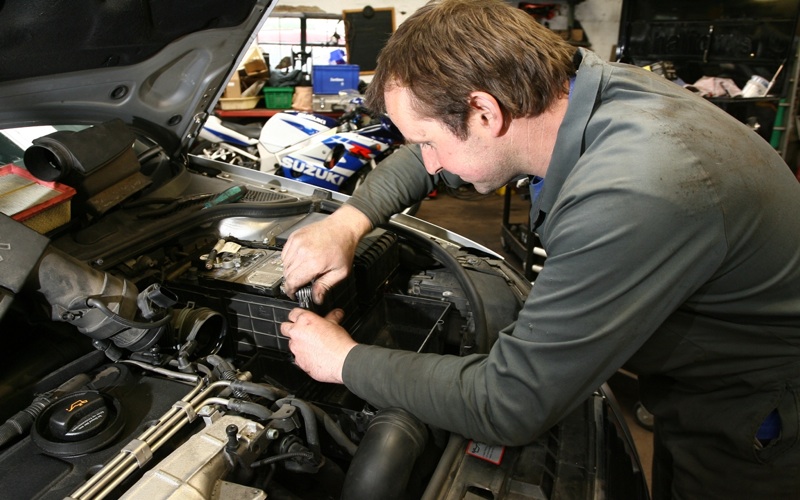There are numerous stories in the press concerning what most know – that there’s a shortage of staff in the automotive sector.
The Institute of the Motor Industry (IMI), in a report titled Automotive sector employment 2021-2031, reckoned that between then and 2031 the sector would need a net 160,000 vacancies filling. Retirement, migration and occupational mobility are all significant contributors to the expected and unprecedented number of available vacancies.
And as CAT reported recently (July 2023), “there are currently 218 occupations across the industry, with technological advances – from ADAS and electric to connected motoring and online sales – creating opportunities that go far beyond traditional perceptions of working in automotive.” The comment came as the IMI had created a Diversity task force to encourage more to think about a career in automotive.
A story on an online forum, The Conversation, further makes the point; that it’s not just a problem for the UK, but rather, employers in many countries around the world are also struggling to recruit and are often unable to fill job vacancies.
Some say that this is a result of the pandemic and the ‘great resignation‘ or ‘great reshuffle‘ where workers sought to leave roles they were unhappy in or just wanted to improve their work-life balance. Others highlight long-term sickness, especially following COVID-related illnesses.
However, the real reason is more subtle according to Joop Schippers, Professor of Labour Economics at Utrecht University. He emphasises a general decline in workers aged 35 years and under along with an ageing workforce.
Indeed, birth rates in numerous countries have been falling since the 1960s – even China has seen a drop in its population this year. Many countries have a real demographic problem with an aging population; Japan and South Korea are especially worried.
Fundamentally, fewer young people are entering the workforce to fill vacancies left by the older generations retiring.
Older workers contribute
Older workers have much to offer employers and should be thought of as more than just ‘warm bodies’ that can fill a recruitment void.
A 2017 report from the Centre for Ageing Better, What do older workers value about work and why? noted that there are clear benefits to employers in retaining older workers and keeping them engaged.
It found that older workers’ abilities do not suddenly diminish in the period leading up to and beyond state pension age: “Many older workers may actually be more adept in their role because of the expertise they have gained; they often have highly developed communication skills and can confidently solve problems, handle tricky situations and contribute well to teams. Older workers often have unique insights and good judgement gained from their years of experience.”
The report added that “the benefits for employers who take engagement of older employees seriously include better retention, improved knowledge-transfer, better employee relations and lower recruitment and training costs.”
A story on Forbes, a US business publication, adds more to the argument in favour of the older worker. Arlene Donovan, a Forbes Councils member, wrote that older or mature workers know their strengths, address their weaknesses and are not afraid of their own shadow: “They are team players, know how to lead, can drive business needs and create sustainable outcomes. Not only should you not be overlooking this, but you should be actively seeking out the breadth of knowledge and expertise an older worker possesses. Older workers are determined, innovative, strategic, loyal, revenue-producing and creative problem-solving professionals focused on the big picture.”
Keeping the older worker
Before looking at what can be done to keep an older worker on staff or enticed back into the workplace, we need to recognise that many – not all – older workers have choice. They are likely to be ‘free’ of children, may have paid off their mortgage, and not only will have accumulated (some) wealth over their working lives, but may have received inheritances. In other words, they may not have to work.
This means that those seeking to keep older workers on board need to recognise that they want interesting work which stretches them and makes full use of their skills and experience. Like others, they are more likely to feel engaged and be motivated if they feel their job is varied and worthwhile.
One way of doing this is to grant autonomy over what they are asked to do while granting latitude over the how and when. This recognises that these workers have knowledge, experience and judgement which is valued.
A 2022 piece in the Harvard Business Review, 7 Principles to Attract and Retain Older Frontline Workers, reported on another older workers study. It backs this view: “According to our study, 76% of survey respondents who would recommend their company to others say, “my work has special meaning: this is not ‘just a job.’”
An allied point is that older workers are more likely to want to collaborate with others or have contact with clients or members of the public. Interestingly, more than two-thirds of employees in the Harvard study prioritised ‘fun places to work.’ The study noted also that many essential roles can be monotonous and difficult and so a “fun-loving workplace where employees enjoy each other’s company can mean a lot to the frontline experience. What is more, customer satisfaction and employee happiness are correlated.”
Similarly, the Harvard study found older workers valued management that communicated expectations clearly; this may need the training of younger managers when leading intergenerational teams.
Older workers also want fair access to career development with training and promotion opportunities. And just because they are greying doesn’t mean that that don’t want to learn.
It is just as important to note that as we get older our health needs change; aches, pains and medical conditions can lead a worker to feel that it’s time to retire. Indeed, it’s been advised to never ask a man over 50 how he’s feeling – you’ll get a long answer. Employers need to make workplace adjustments if they want to keep older workers.
Suitable adjustments can counter this. Access to occupational health support, as well as appropriate physical adjustments, together with equipment that can help reduce effort or repetitious actions where they worker has physical limitations, can all make a difference.
Flexible working arrangements may be considered essential by young parents. But they are just as important to older workers who want well-earned freedom. Reduced hours or ability to adjust the time and place of work are fundamental to making work more age-friendly. At the same time, older workers are likely to prefer less commuting. Again, the Harvard survey reported that older workers cited leeway around shifts and leaves of absence as an essential element in a great workplace culture. Allied to this is the desire to be able to help care for grandchildren when parents need help.
Flexibility can make a big difference.
Hiring the older worker
Employers that recruit and retain older workers tend to have an educated workforce that is alive to age discrimination issues where harassment and victimisation is dealt with immediately. This applies to pay as much as anything else. Harvard commented here that employers should “look at pay equity by job and level, not tenure.”
This works both ways – an older worker may change career and not have direct experience of a sector. However, they’ll have other useful traits so may still justify a level of pay. At the other end of the scale, an employee may have much professional experience and that will cost – but that expense can be contained by offering flexible and fewer hours. And on flexibility, older workers may appreciate being paid flexibly – weekly helps some.
Lastly, it’s important to consider what the organisation actually needs in terms of skills, experience and qualifications. These should be objectively specified so that age is no bar and experience becomes apparent on a CV or at interview. And in terms of qualifications, it should be remembered that the older worker may not have formal qualifications but will know just as much from hands-on experience.
Summary
It’s clear that we’re in an age of tight recruitment and that all avenues should be explored. Older workers have much to offer and a wise employer will target them much as they would someone fresh to the world of work. Grey really can be good.















Go to comments